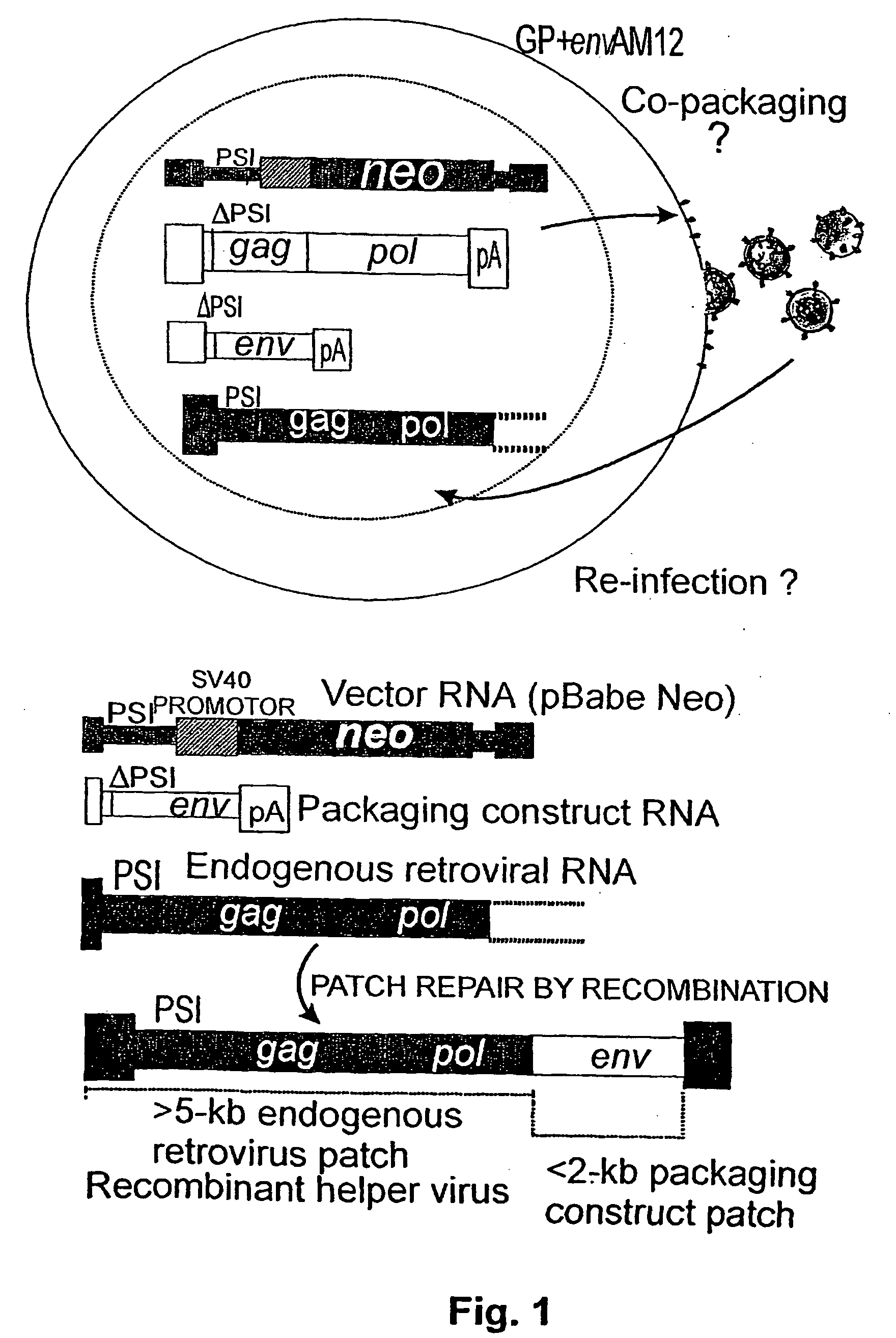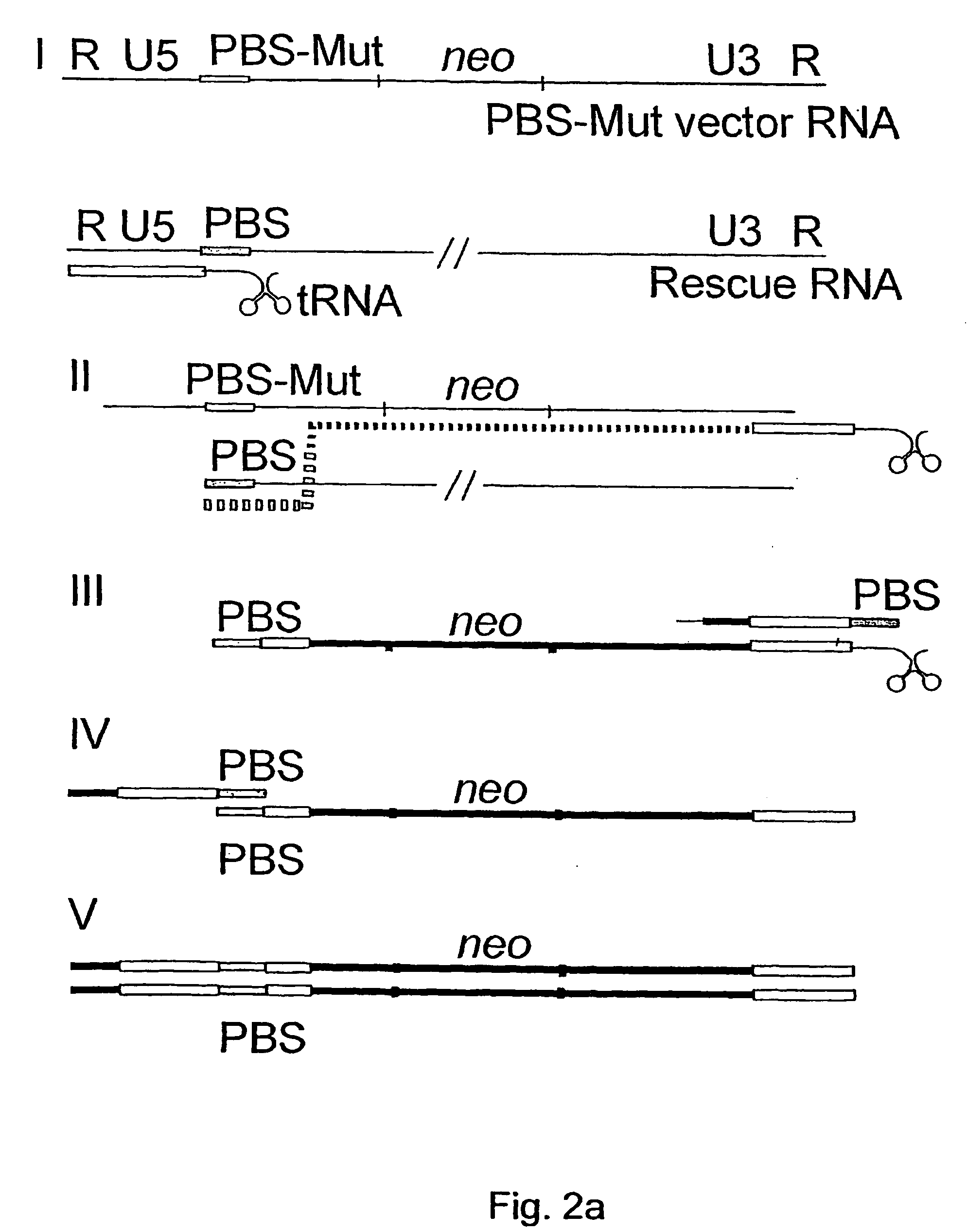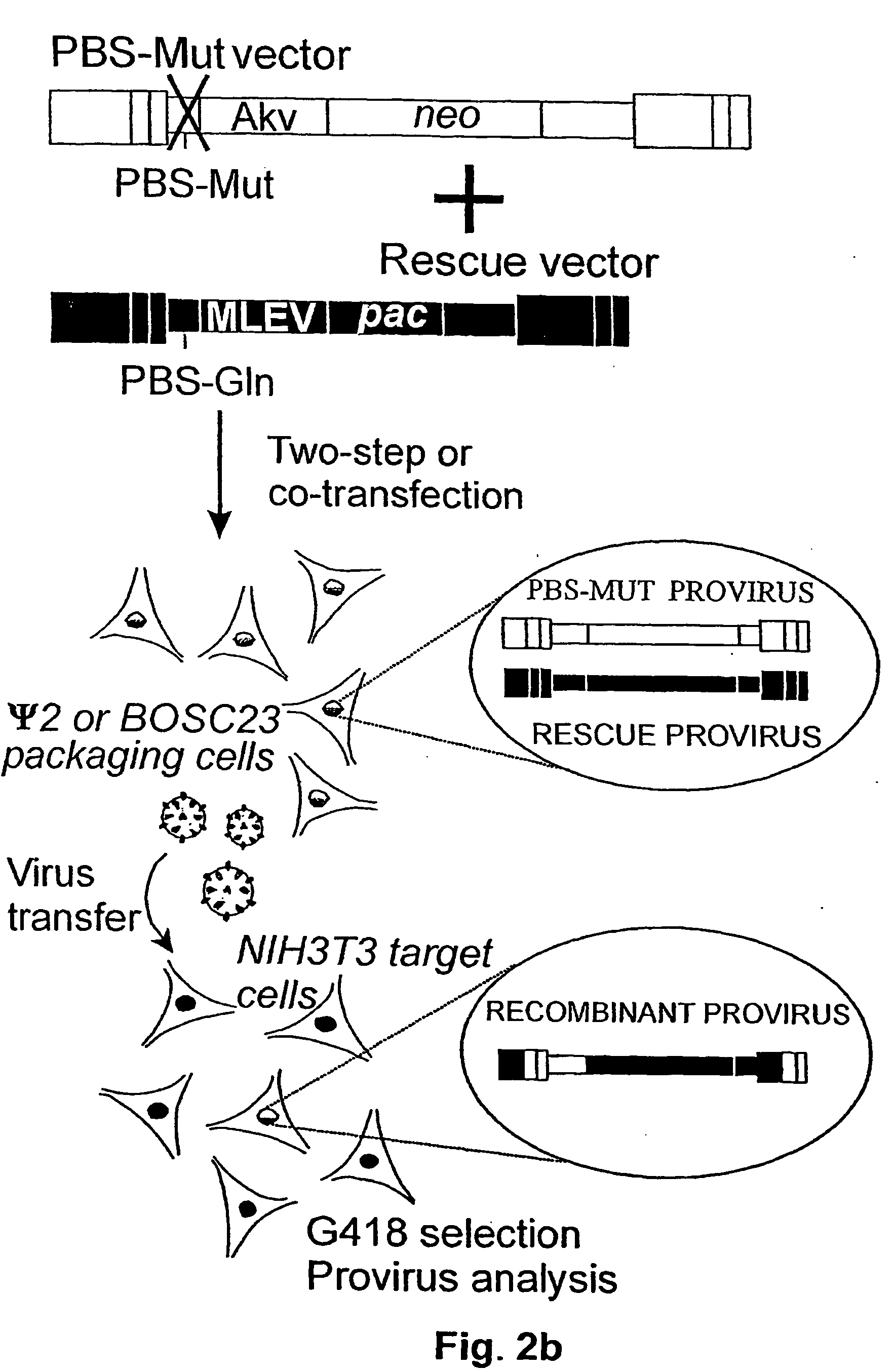Vectors for gene therapy
a gene therapy and vector technology, applied in the field of vectors for gene therapy, can solve the problems of inability to replicate modified retroviruses, risky generation of replication-competent viruses in retrovirus-based gene transfer applications, and producer cells bearing the risk, so as to improve the safety of gene therapy vector systems and reduce the frequency of recombination
- Summary
- Abstract
- Description
- Claims
- Application Information
AI Technical Summary
Benefits of technology
Problems solved by technology
Method used
Image
Examples
example 1
Generation of Replication-Competent Virus from Packaging Cells Used in Gene Therapy
[0076] In a conventional protocol for producing virus particles for use in gene therapy, a producer cell providing the machinery for replicating and packaging a retroviral genome is used (see FIG. 1). In the example shown, the packaging cell contains endogenous retroviral RNA containing the gag and pol gene.
[0077] As a packaging construct, a construct is used which contains the env gene. The vector which is designed for introduction into the target cell contains in the present case the SV 40 promoter and the neo gene. None of such constructs is per se capable of replication and packaging. However, if recombination between the packaging constructs RNA and the endogenous retroviral RNA occurs, a fully functional recombinant virus is created which can then be harmful to the recipient due to its uncontrolled replication and growth in the recipient.
example 2
The Presence of an Alternative Palindrome in Akv-Based Vectors Reduces Recombination
[0078] experiments showing that Akv-MLV-derived vectors modified in the kissing-loop region by insertion of an alternative palindrome can reduce recombination with a simulated endogenous virus
[0079] Introduction:
[0080] In the in vivo situation a vector RNA may co-package with an endogenous virus transcript and through recombination during the process of reverse transcription, the endogenous virus may donate functional sequences. Eventually, this may lead to the generation of replication competent viruses (see example 1). In murine cells (Psi2 cell line) PBS mutated Akv-derived vectors have been shown to give rise to rare recombination events with an endogenous murine leukemia virus (MLEV) (Mikkelsen et al., J. Virol. 70: 1439-47, 1996) probably due to low expression of endogenous virus. In order to perform a quantitative study and additionally to modify sequences in both vector and endogenous virus a...
example 3
Introduction of Non-Palindromic Sequences into the Kissing Loop Region (DIS 2)
[0096] Introduction:
[0097] To study whether non-palindromic sequences can be used to direct the heterodimerization of retroviral vectors the following experiment was performed.
[0098] Description of Vector Constructs:
[0099] pPBSMutKL-nonpalAkv-neo and pMLEVleaderKL-nonpalAkv-pac: The non-palindromic loop motif (KL-nonpal) was introduced into the kissing-loop sequence of pPBSMut476Psi Akv-neo and pMLEVleaderAkv-pac (see example 2) by PCR-mediated mutagenesis using the following sense oligonucleotide matching Akv (the altered loop sequence is underlined): ON4 (5'-CTGATTCTGTACTAGTTAGGATACTAGATCGTATCTGGC-3' (SEQ ID NO: 12)) introducing the non-palindromic sequence 5'-TAGGAT-3' (SEQ ID NO: 13) together with an antisense oligonucleotide matching the most 3' part (positions 617 to 638) of either Akv-Psi (ON8, 5'-CAGGTCGACGGATCCGTTTTTAG-AAGCGGTCCAAAAC-3' (SEQ ID NO: 10)) or MLEV-Psi (ON9, 5'-CAGGTCGACGGATCCGATCTCGA...
PUM
| Property | Measurement | Unit |
|---|---|---|
| Fraction | aaaaa | aaaaa |
| Fraction | aaaaa | aaaaa |
| Length | aaaaa | aaaaa |
Abstract
Description
Claims
Application Information
 Login to View More
Login to View More - R&D
- Intellectual Property
- Life Sciences
- Materials
- Tech Scout
- Unparalleled Data Quality
- Higher Quality Content
- 60% Fewer Hallucinations
Browse by: Latest US Patents, China's latest patents, Technical Efficacy Thesaurus, Application Domain, Technology Topic, Popular Technical Reports.
© 2025 PatSnap. All rights reserved.Legal|Privacy policy|Modern Slavery Act Transparency Statement|Sitemap|About US| Contact US: help@patsnap.com



